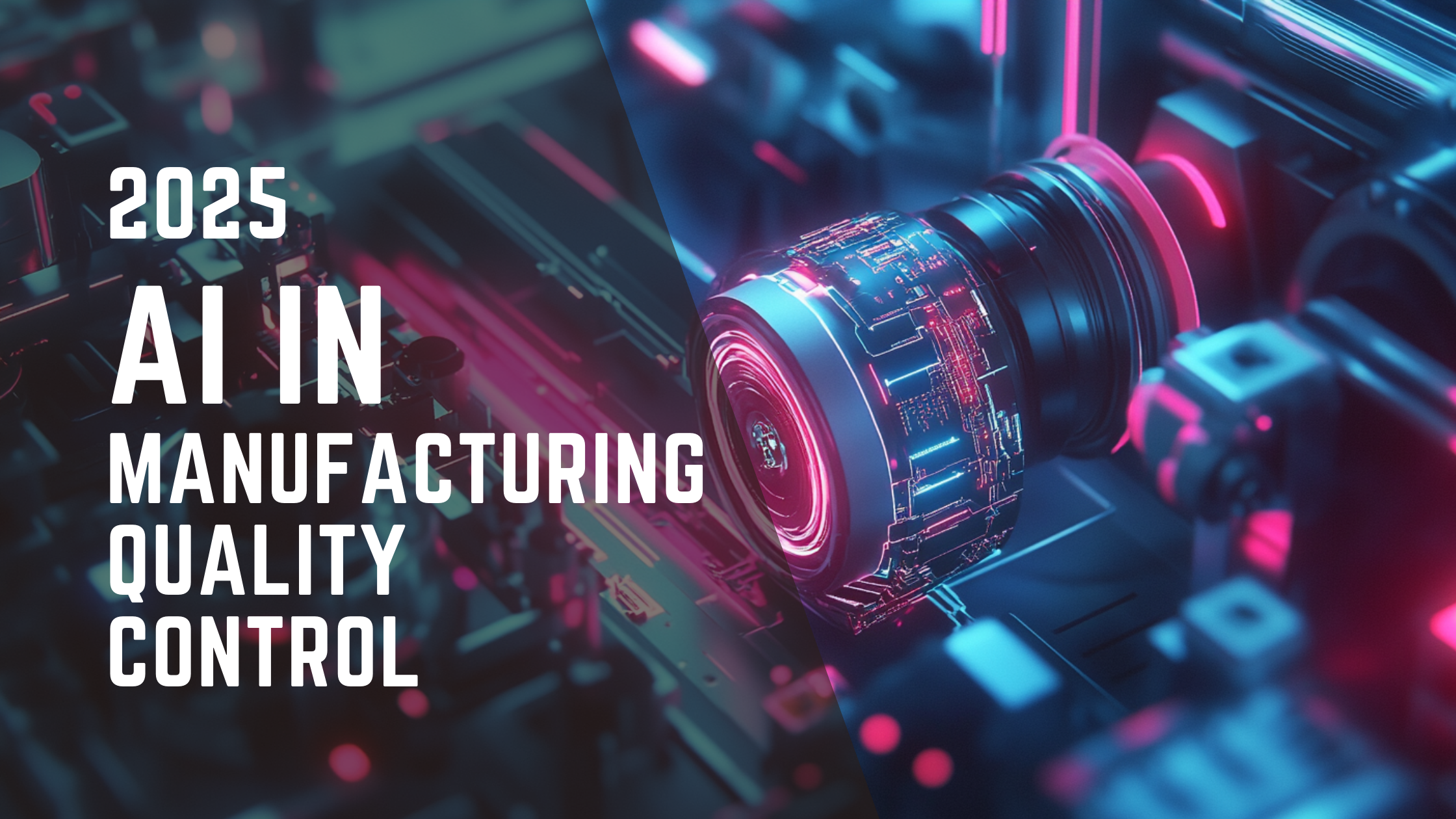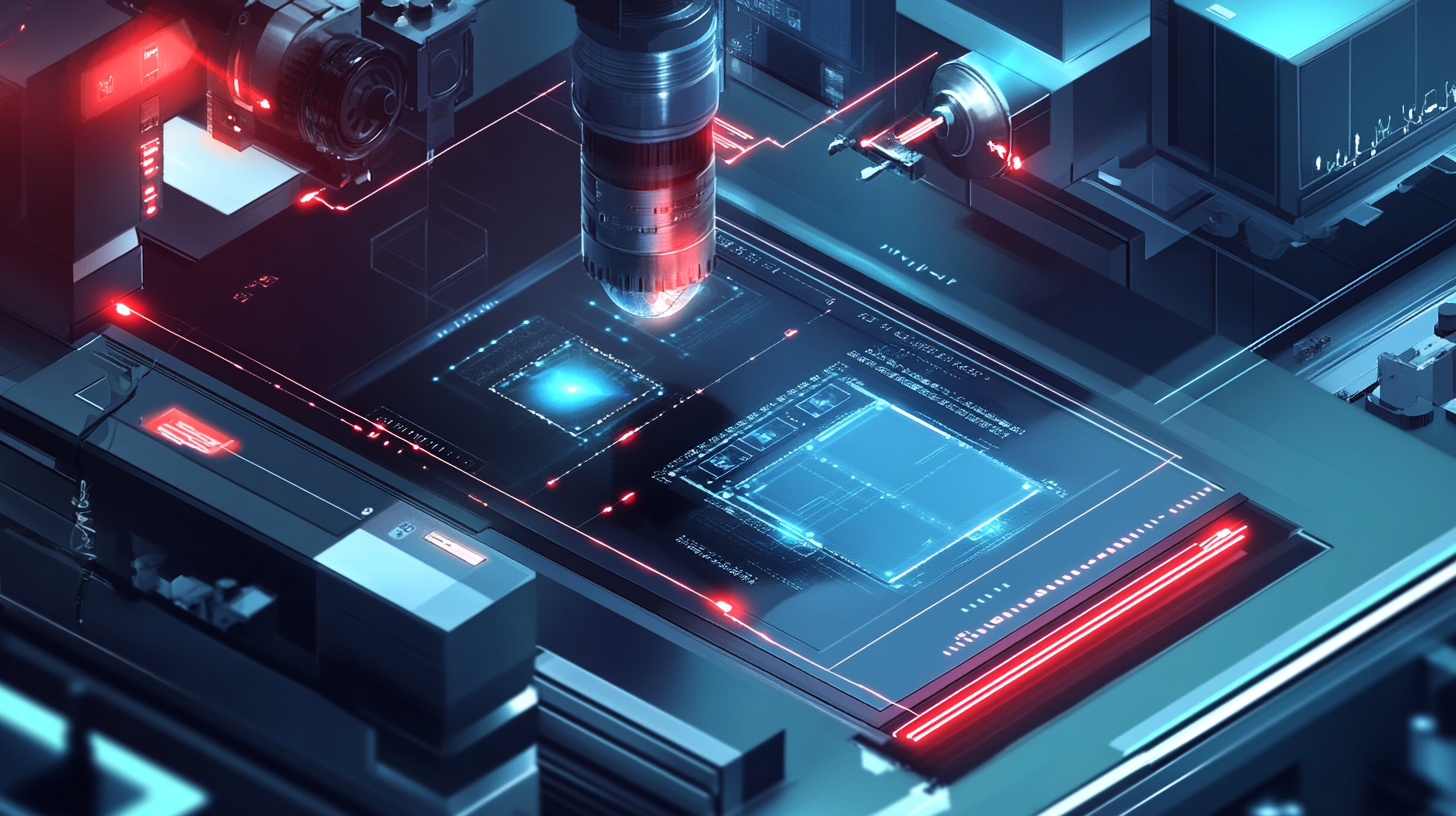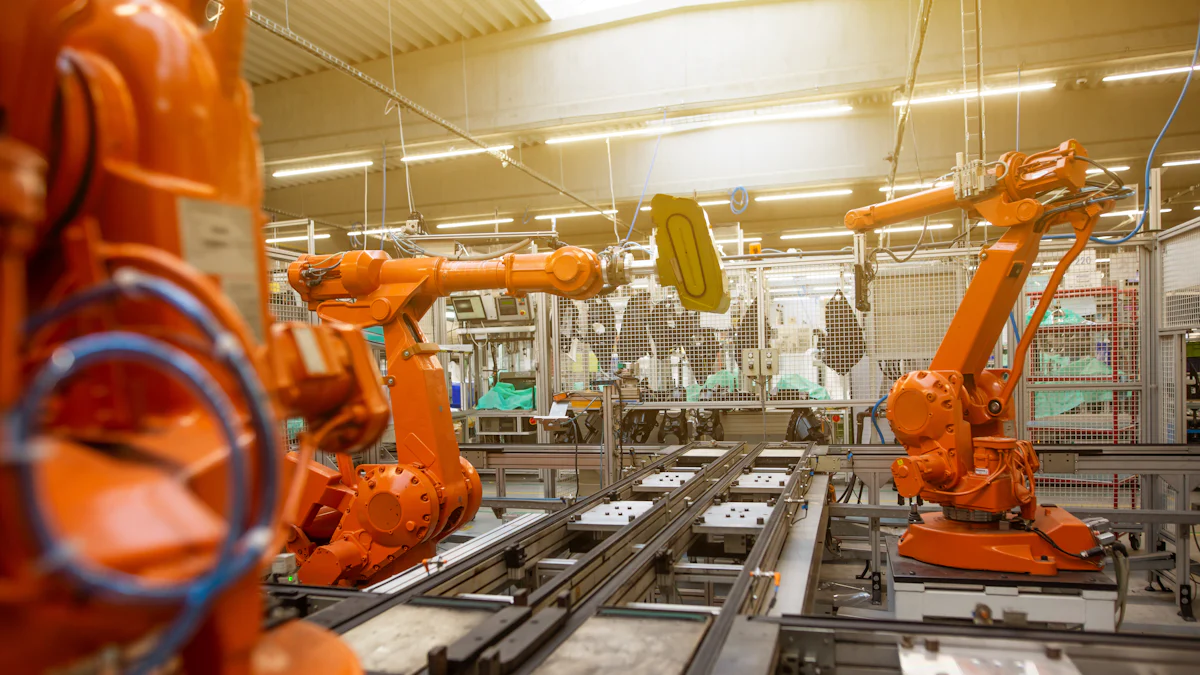Streamlining Manufacturing Quality Control Using AI in 2025

Traditional quality control in manufacturing often struggles with inefficiencies and inconsistent results. You can now overcome these challenges with AI-driven inspection systems. These automated visual inspection systems use machine vision to deliver real-time defect detection and improve product quality. By 2025, their market size is expected to reach $2.3 billion, driven by manufacturers prioritizing compliance and precision.
The Limitations of Traditional Quality Control
Traditional quality control methods often fall short in meeting the demands of modern manufacturing environments. You may find these methods plagued by inefficiencies that hinder productivity and compromise product quality. Several key limitations highlight why traditional approaches struggle to keep pace with evolving industry standards.
Inadequate testing and inspection protocols frequently result in missed defects. Without clearly defined procedures, you risk inconsistencies in identifying and addressing quality issues.
Poor communication and collaboration among team members can lead to fragmented processes. This lack of coordination often delays defect resolution and impacts overall efficiency.
Insufficient documentation and record-keeping practices create gaps in accountability. When records are incomplete or disorganized, it becomes challenging to track defects or implement continuous improvement strategies.
These limitations stem from the manual nature of traditional quality control. Human inspectors, while skilled, are prone to fatigue and errors. This can lead to inconsistent results, especially in high-volume production settings. Additionally, manual inspections often lack the speed and precision required to meet the demands of today’s fast-paced manufacturing environments.
Traditional methods also struggle to adapt to complex product designs and stringent regulatory requirements. As products become more intricate, you may find it increasingly difficult to ensure consistent quality without advanced tools. These challenges underscore the need for innovative solutions that can enhance accuracy, efficiency, and reliability in quality control processes.
By addressing these limitations, you can unlock new opportunities to improve product quality and streamline operations. AI-driven systems offer a promising alternative, providing the precision and scalability that traditional methods lack.
How AI-Driven Vision Inspection Systems Work

Key Components of Automated Visual Inspection Systems
Automated visual inspection systems rely on several key components to ensure precise defect detection and efficient operation. Each component plays a critical role in the quality control process.
Lens: Captures high-resolution images of products for detailed analysis.
Lights: Illuminates objects to enhance visibility and improve detection accuracy.
Sensors: Converts captured images into digital formats for processing.
Processor: Runs defect detection algorithms to analyze images and identify flaws.
Communication: Ensures seamless interaction between components for smooth operation.
These components work together to create a robust system capable of handling complex manufacturing environments. By integrating these technologies, you can achieve consistent and reliable results in your quality control process.
Step-by-Step Process of AI-Driven Quality Control
AI-driven inspection systems follow a structured process to identify and classify defects.
Image Capture: High-resolution cameras capture images of products during production.
Data Processing: Sensors convert these images into digital data for analysis.
Defect Identification: AI algorithms analyze the data to detect defects such as missing components or misalignments.
Classification: The system distinguishes between critical and non-critical flaws using machine learning techniques.
Action: Based on the analysis, the system flags defective products for further review or removal.
This process ensures accurate and efficient defect detection, reducing errors and improving product quality.
Integration with IoT and Real-Time Monitoring
Integrating automated visual inspection systems with IoT enables real-time monitoring and data sharing across devices. IoT connectivity allows you to collect real-time data from production lines, enhancing decision-making and operational efficiency.
For example, IoT sensors can transmit data to centralized systems, enabling anomaly detection and predictive maintenance. This integration ensures that you can address issues promptly, minimizing downtime and maintaining high production standards. By leveraging IoT, you can transform your quality control process into a proactive and data-driven operation.
Benefits of AI in Quality Control in Manufacturing
AI has revolutionized quality control by addressing the limitations of traditional methods. Automated visual inspection systems offer several advantages that enhance your manufacturing processes and ensure consistent product quality.
Unlike traditional approaches that rely on statistical sampling, AI enables comprehensive inspections of every product. This 100% inspection rate significantly reduces the chances of missing a defect, ensuring higher accuracy in quality assurance. You can rely on AI-driven inspection systems to deliver real-time defect identification, which minimizes errors and improves overall product quality.
Machine learning systems analyze images faster than human inspectors, enabling immediate defect detection.
AI systems utilize pattern recognition to classify flaws efficiently, surpassing human capabilities.
High-resolution cameras and real-time analysis allow for the rapid processing of thousands of images, enhancing operational efficiency.
AI models improve accuracy over time by learning from data, ensuring consistent detection across high-volume manufacturing environments.
AI-driven inspection systems also eliminate human fatigue and bias, which are common in manual inspections. This ensures reliable and consistent results, even in demanding manufacturing environments. By integrating machine vision with automated systems, you can achieve unparalleled precision in defect detection and classification.
The speed and scalability of AI allow you to address issues promptly, reducing downtime and maintaining production flow. These systems not only improve product quality but also optimize operational efficiency, making them indispensable for modern quality control in manufacturing.
Tip: Adopting AI-driven inspection systems can transform your quality assurance process, ensuring flawless products and streamlined operations.
Practical Applications of Automated Visual Inspection Systems

Automated visual inspection systems have transformed quality control across industries by enhancing defect detection and improving product quality. These systems address specific challenges in various sectors, ensuring precision and efficiency in manufacturing processes.
Surface Defect Detection in Automotive Industry and Consumer Goods
Surface defect detection plays a critical role in maintaining the quality of vehicles and consumer goods. Automated visual inspection systems excel at identifying imperfections such as scratches, dents, or discoloration on product surfaces. By analyzing high-resolution images, these systems ensure that only flawless products reach your customers.
For example, UnitX collaborates with many automotive companies to inspect vehicles using machine vision-based systems. This approach detects 10% to 40% more defects compared to manual methods, ensuring superior product quality. In the consumer goods sector, such advancements help you maintain brand reputation and customer satisfaction.
Assembly Verification in Medical Devices
Assembly verification ensures that medical devices meet stringent safety and compliance standards. Automated visual inspection systems verify the correct assembly of components, reducing the risk of errors that could compromise patient safety.
Dovideq Medical Systems, for instance, uses automated systems to inspect endoscopes. This ensures that these critical devices meet quality standards, preventing potential injuries. By adopting such systems, you can enhance the reliability and safety of your medical products.
Quality Control in Food Processing and Packaging
In food processing, maintaining product quality and safety is paramount. Automated visual inspection systems monitor production lines to detect contaminants, packaging defects, or labeling errors. These systems ensure compliance with food safety regulations while minimizing waste.
Note: Industries such as telecommunications, electronics, and printing have also benefited from automated visual inspection systems. These systems ensure precision and consistency, making them indispensable for modern manufacturing.
Industry | Application Description |
|---|---|
Automotive | Automotive suppliers supply parts to automotive manufacturers (OEMs) for assembly into final vehicle production. These parts, such as transmissions and tires, can be extremely complex and require precise specifications. |
Electronics | Quality assurance for PCBs and components, detecting defects like soldering issues and misalignment. |
Consumer Goods | Defect detection in manufacturing and packaging to maintain product quality. |
Medical Devices | Assembly verification for compliance and safety of medical products. |
Food Processing | Monitoring product quality and detecting contaminants to ensure food safety compliance. |
Printing and Packaging | Verification of printed characters and labels for accuracy and branding adherence. |
By leveraging automated visual inspection systems, you can achieve unparalleled accuracy and efficiency in quality control, ensuring flawless products across diverse industries.
Challenges and Considerations in Implementing AI
High Initial Investment and ROI Timeline, Maintenance and Regular Model Updates, Need for Skilled Human Operators and Training
Implementing AI in quality control presents several challenges that you must address to maximize its potential. The initial investment required for AI-driven systems can be substantial. Costs include purchasing advanced equipment, upgrading infrastructure, and training your workforce. While these systems offer long-term savings by improving operational efficiency and reducing waste, the upfront expenses may seem daunting. Additionally, the return on investment (ROI) timeline can vary depending on your production scale and industry.
Maintaining AI systems requires regular updates to ensure accuracy in defect detection. AI models need continuous validation and tuning to adapt to changing production conditions. Without proper maintenance, the system's performance may degrade over time. You must also ensure that the images used for AI predictions are clear and accurate, as poor-quality data can compromise results.
Another critical consideration is workforce adaptation. AI systems demand skilled operators who understand machine vision technology and can manage the system effectively. Retraining your team to work alongside AI tools is essential. However, concerns about job displacement may arise, even though AI serves as a collaborative tool rather than a replacement for human expertise.
How UnitX’s AI-Powered Machine Vision System Helps Solve the Challenge
UnitX’s AI-powered machine vision system addresses these challenges by offering a scalable and fast-to-deploy solution. The system minimizes the need for extensive retraining by providing intuitive interfaces that your team can quickly learn. Its advanced AI algorithms ensure reliable defect detection, even with limited defect samples for training. By continuously learning and adapting, the system maintains high accuracy without frequent manual intervention.
UnitX also reduces the burden of high initial costs by offering modular solutions tailored to your specific needs. This approach allows you to implement AI incrementally, spreading out expenses while still reaping the benefits of improved quality assurance. Additionally, the system integrates seamlessly with existing production lines, minimizing downtime during installation.
With UnitX, you can achieve consistent quality control while addressing the challenges of cost, maintenance, and workforce adaptation. This makes it an ideal choice for manufacturers looking to enhance operational efficiency and product quality.
AI-driven vision inspection systems are revolutionizing quality control in manufacturing. These systems detect defects with precision, reducing waste and production costs. You can achieve a 30% reduction in defect rates and cut inspection time significantly, with full ROI in under two years. AI’s adaptability ensures continuous improvement, enhancing decision-making and operational efficiency.
Beyond 2025, AI will redefine quality control by enabling real-time inspections and predictive maintenance. This evolution will shift your focus from repetitive tasks to strategic oversight. Augmented reality tools integrated with AI will further enhance defect detection, creating a seamless partnership between human expertise and machine precision.
By embracing AI, you can transform your manufacturing processes, ensuring smarter, more efficient production and unmatched product quality.
FAQ
What industries benefit the most from AI-driven quality control systems?
Industries like electronics, automotive, medical devices, and food processing benefit significantly. These systems ensure precision, compliance, and efficiency in high-volume, detail-oriented production environments.
How does AI improve defect detection compared to manual inspections?
AI analyzes thousands of images in seconds, identifying defects with higher accuracy. It eliminates human fatigue and bias, ensuring consistent results across large-scale production lines.
Is it difficult to integrate AI systems into existing production lines?
No, modern AI systems, like UnitX, offer seamless integration. They adapt to your current infrastructure, minimizing downtime and ensuring a smooth transition to automated quality control.
See Also
The Impact of Generative AI on Manufacturing's Future
A Complete Guide to Machine Vision in Automation
Simplifying Quality Inspection in Semiconductor Manufacturing
Exploring Machine Vision Uses in Food Production
Expert Techniques for Visual Inspection in Sausage Packaging
